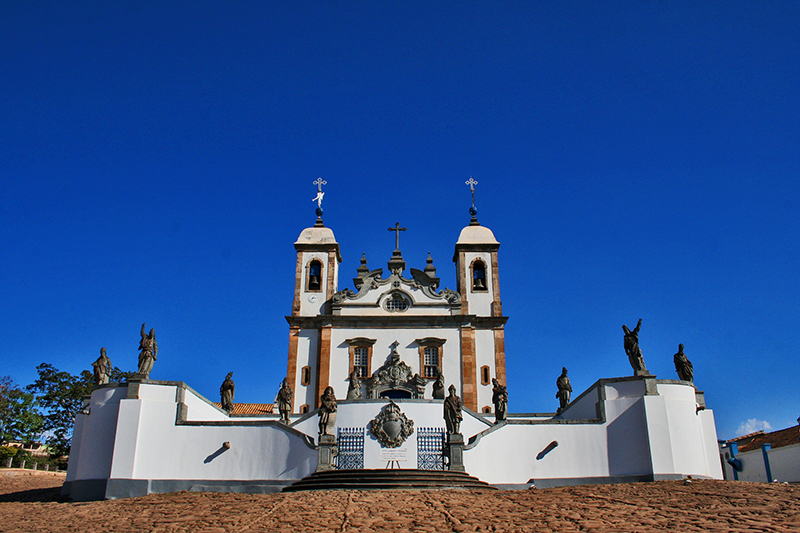
Sanctuary of Bom Jesus de Matosinhos, 1757-1872, Congonhas do Campo, Brazil (photo: Sérgio Mourão , CC-BY-SA-4.0)
Traveling by horse, mule, or on foot through the hilly countryside of Brazil, pilgrims experienced the suffering and triumph of Jesus Christ upon arriving at the sanctuary of Bom Jesus de Matosinhos in Congonhas do Campo. The sanctuary is situated on a steep hill and contains six small chapels that lead up to a church. Scenes of the life and death of Christ, recreated in sculptures and paintings, greet exhausted pilgrims. This elaborate complex of architecture, sculpture, and painting was intended to provoke an intense emotional reaction.
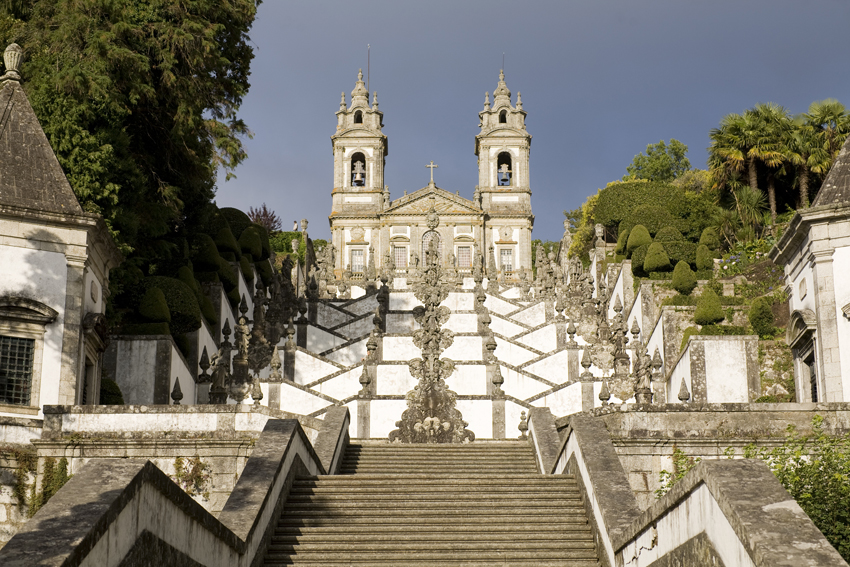
Bom Jesus do Monte, begun 1722, Braga, Portugal (photo: PMRMaeyaert , CC-BY-SA-3.0)
The sanctuary’s design was inspired by the site of Bom Jesus do Monte in Braga, Portugal. According Braga was an old, established city, in the 18th century, Congonhas do Campo was a small, remote village that had emerged only recently as a result of a gold rush that brought tens of thousands of immigrants to the area. The sanctuary is a testament to the religiosity of the inhabitants of the region and remains a popular pilgrimage site to this day. Although a city has formed around the sanctuary and pilgrims can now reach the site by car, visiting the sanctuary remains an impressive experience. Next to the church a room displays hundreds of ex-votos, or tokens of thanks gifted to the sanctuary in response to answered prayers.
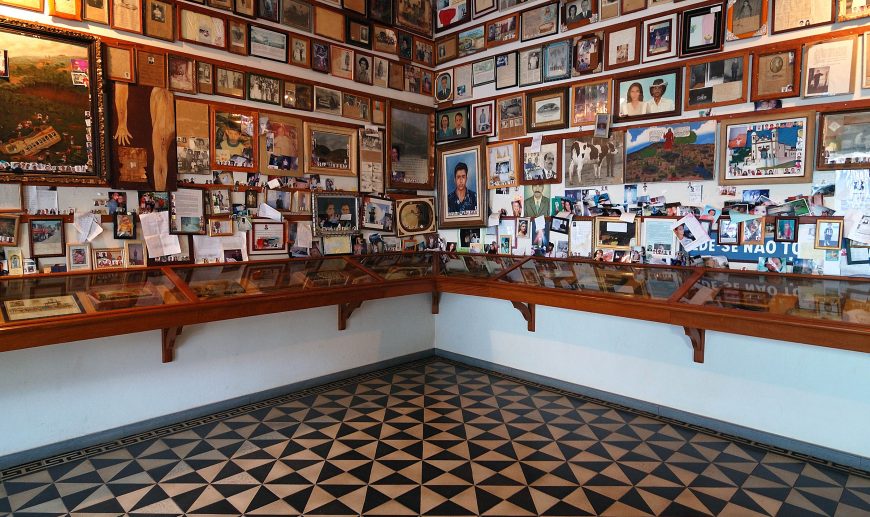
View of the chamber of ex-votos at the Sanctuary of Bom Jesus de Matosinhos (photo: Rosino , CC BY-SA 2.0)

Bouças Christ (Senhor de Matosinhos, or Senhor Bom Jesus de Bouças), mid-12th century, or first decades of the 13th century, polychromed wood, 204 x 169 x 33 cm, Matosinhos parish church, Portugal (photo: © Alexandre Maniés )
The miraculous reputation
The sanctuary is dedicated to Bom Jesus de Matosinhos, an invocation of Jesus associated with a polychrome wood sculpture on display in the town of Matosinhos, Portugal (see left). This sculpture was believed to have been created by Nicodemus, a man who knew Jesus in his lifetime. The sculpture was said to have been a perfect likeness of Jesus and the first depiction of him to arrive in Portugal.
The sanctuary in Congonhas was commissioned by a man named Feliciano Mendes. In 1757 he became gravely ill, prayed to Bom Jesus de Matosinhos, and was miraculously healed. In return, Mendes promised to build a sanctuary. That same year, he began to collect donations, received official approval for his project, and oversaw construction of the church. By the time Mendes died in 1765, the sanctuary offered regular religious services. The centerpiece of the site was a copy of the Bom Jesus do Matosinhos that had been imported from Portugal. The imported sculpture was initially displayed on the cross on the main altar, but was moved to the sarcophagus at the base of the altar when a second sculpture of the crucified Christ was gifted to the sanctuary in 1787.
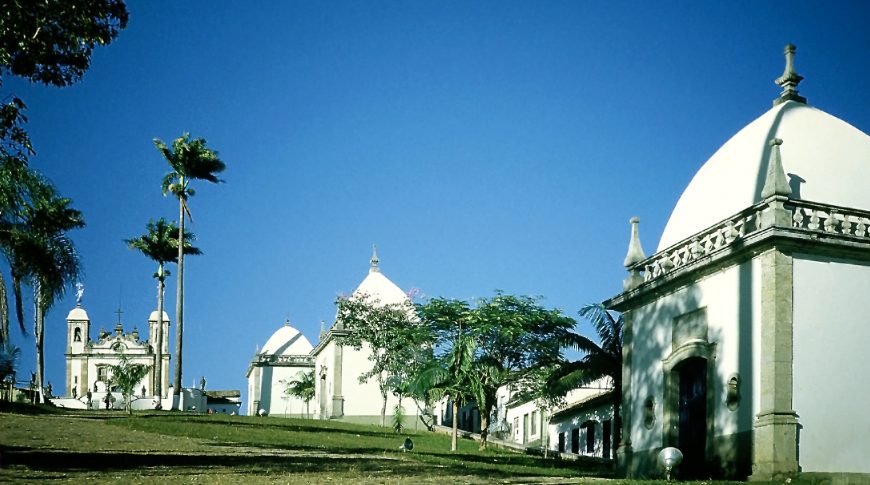
Chapels leading up to the Sanctuary of Bom Jesus de Matosinhos, 1757-1872, Congonhas do Campo, Brazil (photo: public domain)
Like its counterpart in Portugal, the sculpture of Bom Jesus at Congonhas do Campo is considered an especially powerful vehicle of intercession. Prayers said in front of the sculpture are thought to have a great chance of being answered. As a result, the sanctuary at Congonhas do Campo became a major pilgrimage site with people traveling from afar to ask Jesus for assistance. After Feliciano Mendes’ death, devotees continued to donate funds for the creation of the church, atrium, chapels, and many of the sculptures and paintings that were produced over the course of 75 years. Some of the region’s most celebrated artists worked on the project including the architect Francisco de Lima Cerqueira, the sculptor Antonio Francisco Lisboa (better known as Aleijadinho), and the painter Manoel da Costa Ataide, among many others.
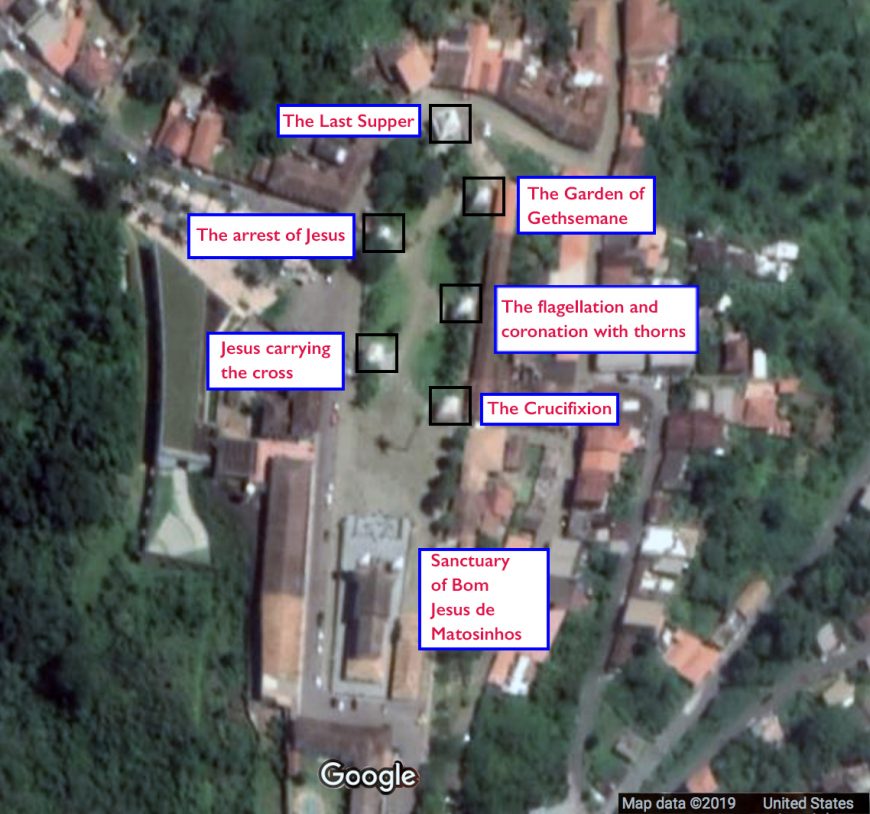
Map showing the chapels of the stations of the cross on the path leading up to the Sanctuary of Bom Jesus de Matosinhos, 1757-1872, Congonhas do Campo, Brazil
A rich narrative
Pilgrims first encounter a series of six chapels that zigzag up the hill. Inside are sculptural groups representing seven of the stations of the cross, important moments at the end of Jesus’ life from the last supper to the crucifixion. The tradition of creating chapels containing depictions of the stations of the cross began in Italy in the fifteenth century. These allowed worshippers to walk from one event to the next and to reenact the portrayed scenes without needing to travel to Jerusalem where the events had originally occurred.
At Congonhas do Campo, Antonio Francisco Lisboa and his workshop created the sixty-four painted wood sculptures that make up the seven scenes and Manoel da Costa Ataide painted the sculptures and the illusionistic interiors found in some of the chapels. Instead of entering the chapels, visitors peer through windows to witness the events recreated inside. The figures are portrayed with exaggerated poses and facial expressions to create a sense of drama and to elicit an emotional response in the viewer.
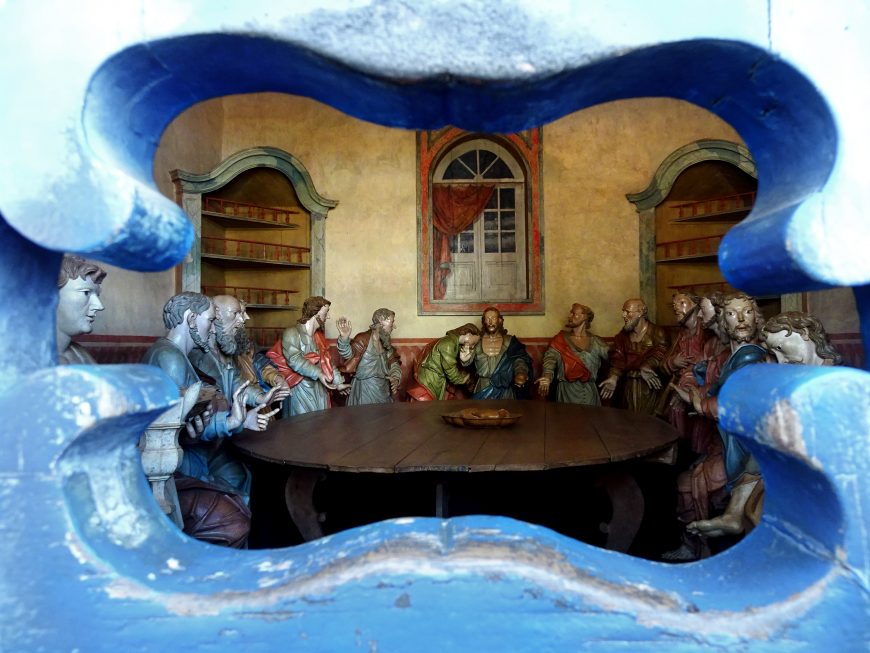
Antonio Francisco Lisboa, A view through the window of a chapel showing the Last Supper, Sanctuary of Bom Jesus de Matosinhos (photo: Mariahaversa, CC-BY-SA-4.0)
After climbing up the hill, visitors reach an elaborate curving staircase that leads to the church. On top of the banisters are twelve nearly life-size stone sculptures of Old Testament prophets. These prophets foretold the coming of Jesus, and each sculpted figure holds an unrolled scroll with their prophecy inscribed in Latin. Antonio Francisco Lisboa also designed these sculptures. Their proportions and forms are distorted to provide a powerful effect when viewed from below.
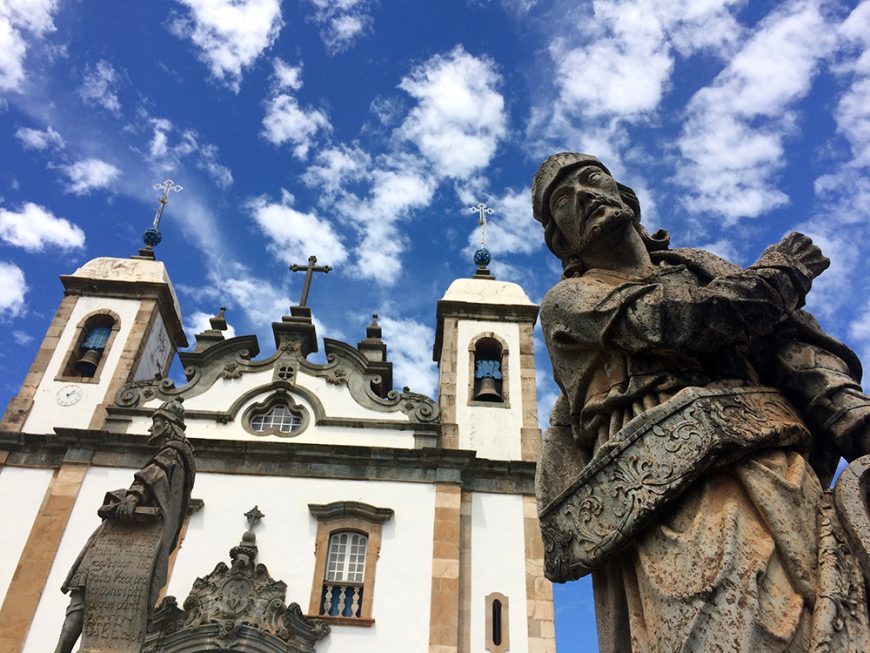
Antonio Francisco Lisboa, sculptures of Old Testament prophets, Sanctuary of Bom Jesus de Matosinhos, Congonhas do Campo, 1757-1872, soapstone (Photo: Lima Andruška, CC BY-SA 2.0)
Lastly, pilgrims enter the church. Paintings above the choir and along the edges of the ceiling depict Old Testament scenes that parallel events in Jesus’ life. Paintings on canvas hang on the walls and portray scenes from the life of Mary before she gave birth and scenes of the life of Jesus, all arranged sequentially with the earliest stories near the entrance and the later scenes near the main altar. These Old and New Testament images lead up to the defining moments on the main altar: the crucifixion and death of Jesus. In addition to the sculptures of the crucifixion and the sarcophagus, the ceiling painting above the altar depicts Jesus being placed in the tomb, again surrounded by Old Testament scenes.
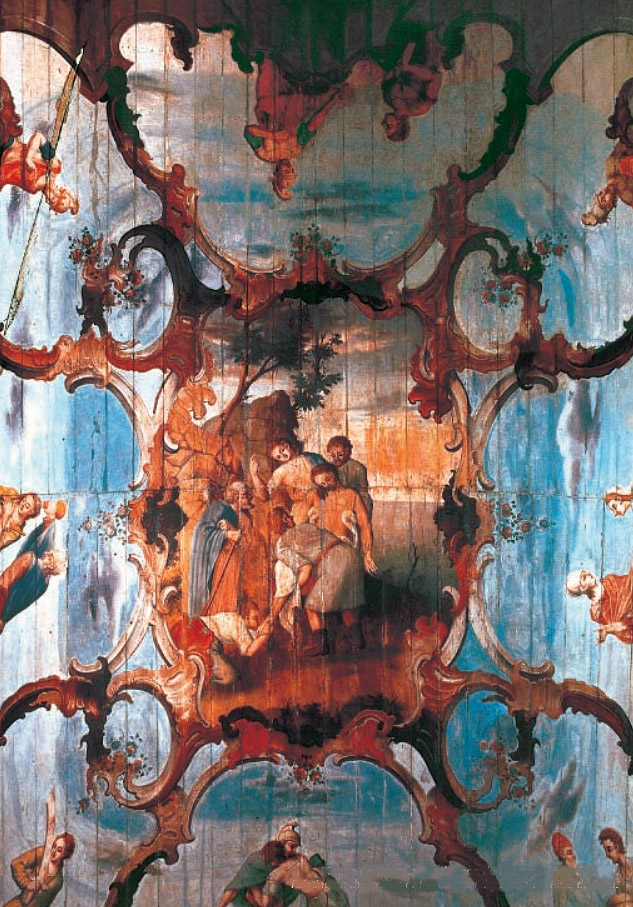
Bernardo Pires da Silva, Ceiling painting over the main altar, Sanctuary of Bom Jesus de Matosinhos (photo: public domain)
While this focus on suffering and death may seem grim, Jesus is believed to have sacrificed himself in order to free his followers from the sin committed by Adam and Eve (depicted above the choir, opposite the main altar) and enable them to gain salvation. The center of the ceiling in the nave highlights the culmination of Jesus’ suffering with a depiction of the Trinity: God the Father, Jesus holding the cross, and the Holy Spirit represented as a dove (see “Virtual Tour” in additional resources below). The initial plan for the sanctuary emphasized Christ’s resurrection with additional chapels behind the church; however, these were never built.

